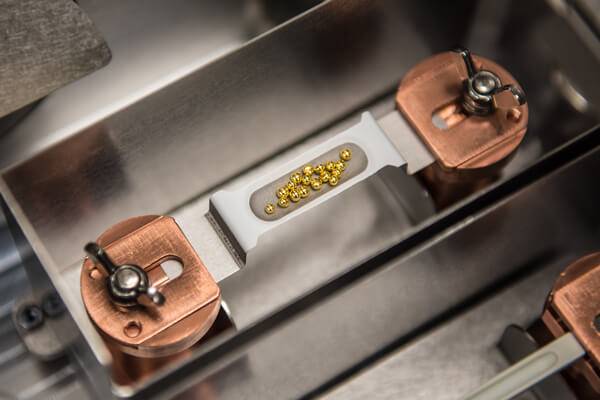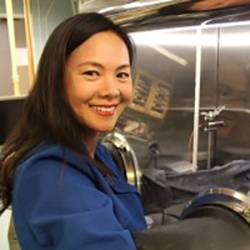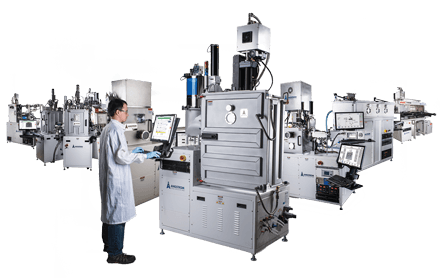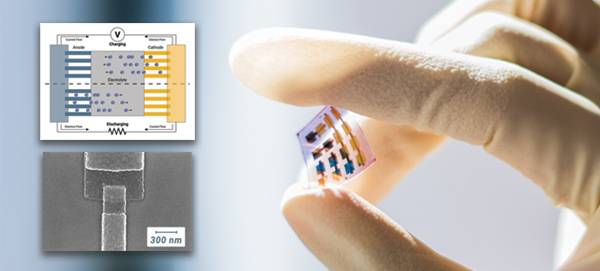Resistive Thermal Evaporation | Physical Vapor Deposition Systems from Angstrom Engineering
Angstrom Engineering is a leading developer of physical vapor deposition (PVD) systems for research and product applications that require thin film deposition technology. Our partners use our systems to drive cutting-edge progress in a variety of industries, including:

What sets Angstrom Engineering Apart?
Our team is driven by a commitment to service and partnership with our customers. We work closely with you, our partner, to provide thin film solutions that meet your specific requirements.
What is Resistive Thermal Evaporation?
Resistive evaporation is a popular physical vapor deposition technique because of its simplicity. Many applications use resistive thermal evaporation. Our partners will use it to deposit metallic contact layers for their thin film devices, such as OLEDs, solar cells, and thin-film transistors.
Materials that can be deposited using this technique include aluminum, silver, nickel, chrome, magnesium, among many others.
How do thermal evaporators work?
During the process of resistive thermal evaporation, a material in a high-vacuum environment is heated to its evaporation point using electrical energy. The vaporized molecules then travel from the source to the substrate where they nucleate together, forming a thin-film coating. High levels of vacuum are needed for resistive evaporation deposition for two reasons. The first is that when gas is evacuated from a chamber, vapor molecules inside it can travel longer distances before they collide with a gas molecule. Collisions with gas molecules are undesirable during evaporation because they change the direction of travel of material vapor and thus can adversely affect the coverage on the substrate. The second reason why high vacuum is important is film purity. Gases that are present in air can be deleterious to film properties if they become incorporated into the deposition.
We have had an Amod thermal evaporator from Angstrom Engineering for almost 6 years. The system has two Luxel Radak sources for organic materials deposition and two thermal resistive sources for metal deposition. This system has been the main workhorse in our group. We use the system for several projects including organic light emitting diodes, field effect transistors, organic solar cells, and charge transport in organic semiconducting materials. We have several labs with over $2,000,000.00 of equipment from 30+ vendors and Angstrom Engineering has the best customer service. I like the fact that they are willing to work with customers to meet their needs. The system is very easy to use. I have two second year undergraduates using the system after working in our lab for less than a year.
Dr. Quyen Nguyen – University of California Santa Barbara

WE WANT TO HEAR ABOUT YOUR PROCESS!
Please get in touch and we can collaborate on your project
When we work together, amazing things can happen. Your brilliant ideas with our innovative team will create the tool that will bring your research or production to the next level. We’re looking forward to hearing from you:






